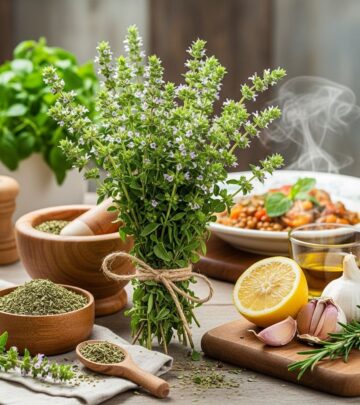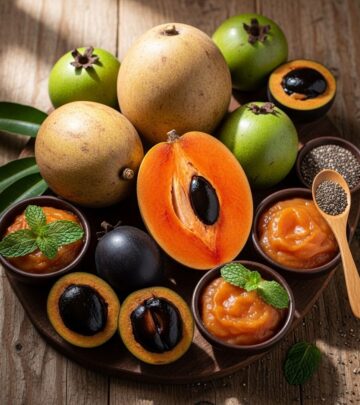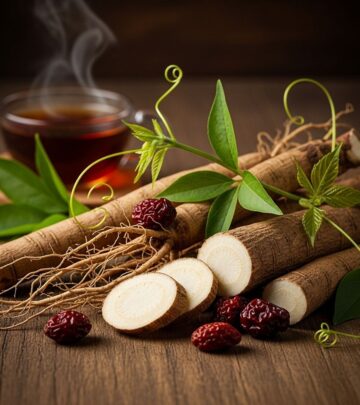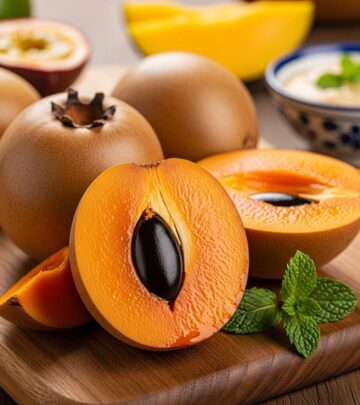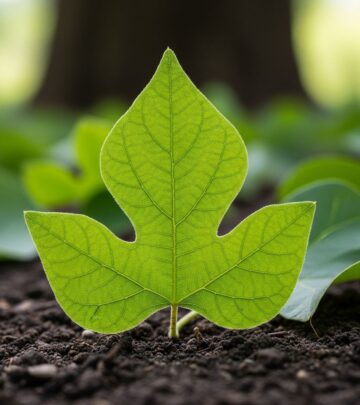Savoy Cabbage: Nutritional Profile, Culinary Uses, and Unique Taste Explained
A winter veggie that adds sweet crunch and a health boost to salads and stews.
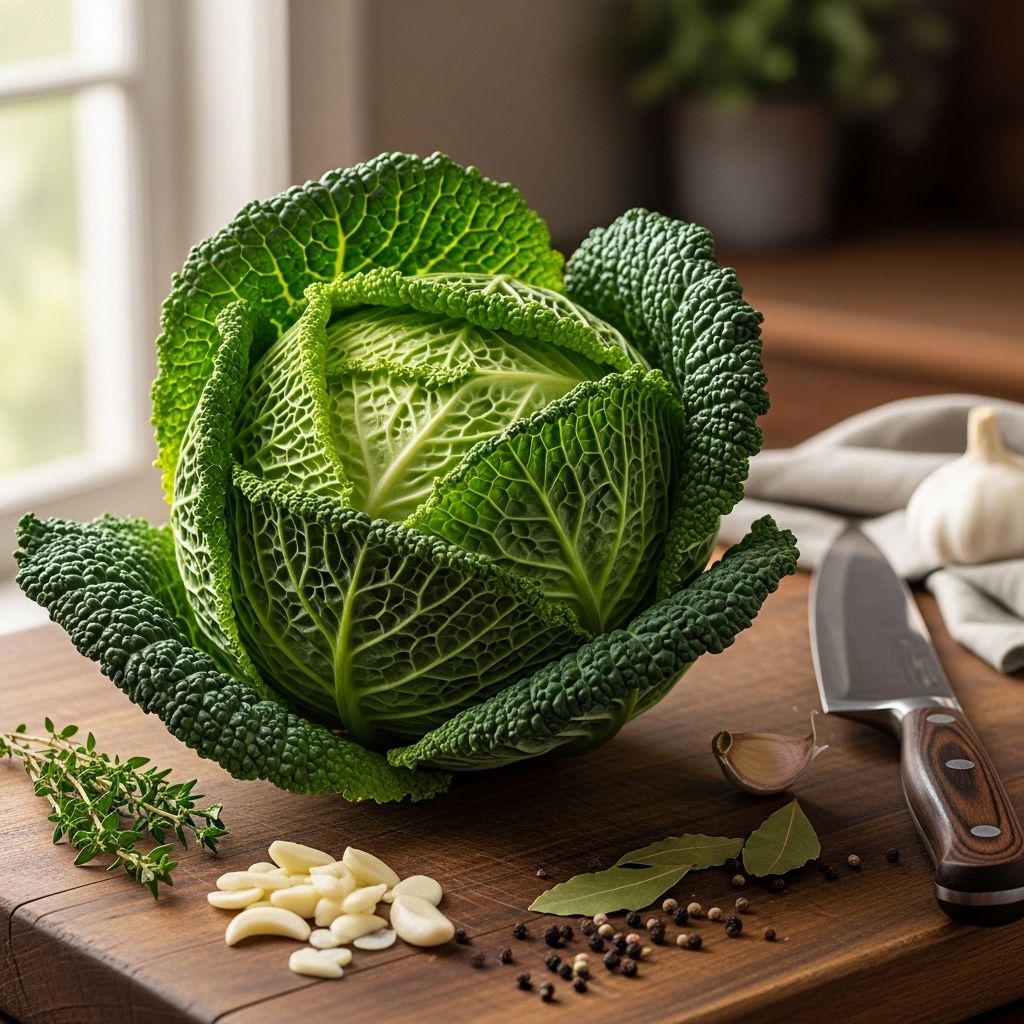
Savoy cabbage is a leafy green winter vegetable prized for its crinkled, wrinkled leaves and delicate texture. Beyond its eye-catching appearance, this versatile brassica offers impressive nutritional benefits, is easy to cook in a wide variety of dishes, and has a mild, sweet flavor that sets it apart from other cabbages. This article provides an in-depth look at Savoy cabbage, covering its origins, health benefits, culinary uses, unique taste, selection, storage, and frequently asked questions.
Table of Contents
- What Is Savoy Cabbage?
- Distinctive Characteristics
- Nutritional Value and Health Benefits
- Culinary Uses
- Taste Profile
- How to Select and Store Savoy Cabbage
- Growing Savoy Cabbage
- Frequently Asked Questions (FAQs)
What Is Savoy Cabbage?
Savoy cabbage (Brassica oleracea var. sabauda L.) belongs to the cabbage family and is known for its deeply crinkled, wrinkled leaves and unique appearance. Originating from the Savoy region in France and Northern Italy, it is sometimes called Milan cabbage or Lombard cabbage. Modern cultivars, such as ‘Savoy King,’ ‘Tundra,’ and ‘Winter King,’ underscore its popularity and adaptability for various growing conditions.
- Species: Brassica oleracea var. sabauda
- Common names: Savoy cabbage, Milan cabbage, Lombard cabbage
- Available: Year-round, with peak seasons in late autumn and winter
- Appearance: Wrinkled, crisp leaves; ranging from light to deep emerald green
Distinctive Characteristics
Savoy cabbage stands out for its visual and textural features. Its heavily textured, wavy leaves are not only decorative but also serve practical purposes. The outer leaves are darker, tougher, and act as protection from environmental stress, while the inner leaves are pale, creamy, and tender.
- Crinkled, heavily veined leaves
- Moderate head compactness (less compact than standard cabbages)
- Resilient to cold; can withstand frost and even snow
- Fast growth compared to other cabbage types
- Mild, sweet flavor and crisp texture
Varieties harvested in spring are generally lighter and milder, while autumn and winter types have a stronger, more pronounced flavor. Savoy’s unique appearance often decorates salads and gourmet dishes.
Nutritional Value and Health Benefits
Savoy cabbage ranks high among brassicas for its health-promoting nutrients and low-calorie content. Like most cabbages, it is a powerhouse of vitamins, minerals, and antioxidants beneficial for overall wellness.
| Nutrient (per 100g raw) | Amount | Percent Daily Value (DV) |
|---|---|---|
| Water | 91% | – |
| Calories | 27 kcal | – |
| Carbohydrates | 6g | – |
| Protein | 2g | – |
| Fat | Negligible | – |
| Vitamin K | 66% DV | High |
| Vitamin C | 37% DV | High |
| Folate | 20% DV | High |
| Vitamin B6 | 15% DV | Moderate |
Core Health Benefits
- Antioxidant rich: Contains vitamin C and other phytonutrients that combat oxidative stress.
- Supports bone health: High in vitamin K, essential for bone metabolism.
- Boosts immunity: Vitamin C aids immune function and infection resistance.
- Folate for cell growth: Crucial during pregnancy and for cardiovascular health.
- Low calorie: Suitable for weight management.
- Dietary fiber: Supports digestion and gut health.
- Potential cancer-preventive properties: As with other Brassica vegetables, glucosinolates may play a role in cancer risk reduction.
Because Savoy cabbage contains negligible fat and significant water content, it is hydrating, filling, and easy to integrate into many health-conscious diets.
Culinary Uses
Renowned for its culinary versatility, Savoy cabbage thrives in a broad spectrum of dishes, from raw salads to hearty stews. Its leaves are more tender than standard green or red cabbage, making it ideal for both raw and cooked preparations.
Main Culinary Applications
- Raw dishes: Inner leaves are tender enough for salads or slaws.
- Soups and stews: Holds its texture well, complementing borscht, pot-au-feu, and vegetable soups.
- Cabbage rolls: Flexible leaves are easy to stuff and roll.
- Stir-fries: Enhances mixed vegetable sautés with mild flavor and crunch.
- Roasted, grilled, or sautéed: Develops sweetness and complexity with heat.
- Preserved foods: Used in recipes for kimchi and sauerkraut.
Classic Pairings
- Herbs: Sage, thyme, caraway, dill, mint, fennel
- Vegetables: Apples, onions, garlic, shallots
- Spices: Horseradish, juniper berries
- Liquids: White wine, olive oil
- Proteins: Pork, beef, lamb, game meats
Recipe Ideas
- Raw Savoy cabbage salad with apples and walnuts
- Savoy cabbage rolls stuffed with rice and seasoned ground meat
- Stir-fried Savoy cabbage with ginger, garlic, and sesame oil
- Borscht with Savoy cabbage and root vegetables
- Roasted Savoy cabbage wedges with olive oil and sea salt
Taste Profile
One of Savoy cabbage’s defining qualities is its mild, sweet, and grassy taste. Compared to white or red cabbages, Savoy is noticeably less pungent or sulfurous and has a more delicate aftertaste. The texture is also unique:
- Crunchy and slightly elastic when raw
- Tender and succulent after brief cooking
- Mild, sweet, grassy undertones, sometimes with cruciferous hints
These qualities make it a favorite among those seeking cabbage flavor without the typical intensity, and it is particularly popular with children and in dishes where a softer vegetable note is desired.
How to Select and Store Savoy Cabbage
For best flavor and longevity, selecting and storing Savoy cabbage properly is essential.
Selection Tips
- Weight: Choose heads heavy for their size.
- Leaf quality: Look for unblemished, crisp, fresh-looking leaves without yellowing or wilting.
- Color: Bright, even emerald to pale green shades signal freshness.
- Tightly packed leaves: Should feel firm and resist gentle pressure.
Storage Guidelines
- Store fresh whole cabbage in the crisper drawer of your refrigerator.
- Keep outer leaves intact and do NOT wash before storing, as excess moisture accelerates decay.
- Savoy cabbage will keep for one to two weeks; consume Chinese-types and Savoy faster than standard cabbages.
- Check periodically for wilting or soft spots and remove any damaged leaves.
Growing Savoy Cabbage
Savoy cabbage is a biennial plant generally grown as an annual for its leaves. It stands out in the garden for several reasons:
- Cold resilience: It is notably winter-hardy and withstands frosts and snow (down to -15°C).
- Fast growth: Faster than other cabbages, with spring varieties maturing quicker.
- Adaptable varieties: Early (spring) Savoy cabbages are light and mild; autumn/winter types are robust and flavorful.
- Disease resistance: Select varieties for resistance to club root and other garden pests.
- Seed saving: Vigorous heads with regular shape and good storage capacity are ideal for seed selection.
Most Savoy varieties can be grown outdoors throughout winter in milder climates. Growers prize their cold tolerance, rapid head formation, and attractive appearance. Attention should be paid to pest management—especially for caterpillars, pigeons, and fungal diseases.
Frequently Asked Questions (FAQs)
Q: What makes Savoy cabbage different from other cabbages?
A: Savoy cabbage is uniquely characterized by its deeply crinkled leaves, mild flavor, and resilience to cold. Its texture is more tender and less pungent than white or red cabbages, making it preferred for both raw and cooked dishes.
Q: Can Savoy cabbage be eaten raw?
A: Yes, especially the tender inner leaves, which add crunch and decorative appeal to salads and slaws. Its mild flavor makes it an excellent raw ingredient.
Q: What is the best way to cook Savoy cabbage?
A: Savoy cabbage adapts to multiple cooking methods: rolling, boiling, braising, roasting, or sautéing. The leaves remain tender but do not become mushy, holding up well in soups and sautés.
Q: Is Savoy cabbage healthy?
A: Absolutely. With high levels of vitamin C, K, and folate, plus a low calorie count and dietary fiber, Savoy cabbage supports immunity, bone health, digestion, and may help lower cancer risk.
Q: Are there different varieties of Savoy cabbage?
A: Yes. Some notable cultivars include ‘Savoy King’ (US), ‘Tundra,’ and ‘Winter King.’ Early varieties are lighter and milder, while late-season types have robust flavor and darker leaves.
Q: How long does Savoy cabbage keep?
A: Usually up to one or two weeks in the refrigerator if kept whole and unwashed. Consume it as soon as possible for best flavor and nutrition, especially compared to hard-heading types which last longer.
References
References
- https://specialtyproduce.com/produce/Savoy_Cabbage_7405.php
- https://en.wikipedia.org/wiki/Savoy_cabbage
- https://specialtyproduce.com/produce/Savoy_Cabbage_12083.php
- https://wildbeimwild.com/en/savoy-cabbage-a-versatile-cabbage-vegetable/
- https://www.diyseeds.org/en/film/savoy-cabbage/
- https://www.syngentavegetables.com/en-us/news/innovation-impact/three-benefits-pointed-savoy-cabbage
- https://www.missouribotanicalgarden.org/PlantFinder/PlantFinderDetails.aspx?taxonid=261916&isprofile=0&chr=19
- https://www.syngentavegetables.com/news/innovation-impact/what-you-need-know-about-pointed-savoy-cabbage
Read full bio of medha deb

